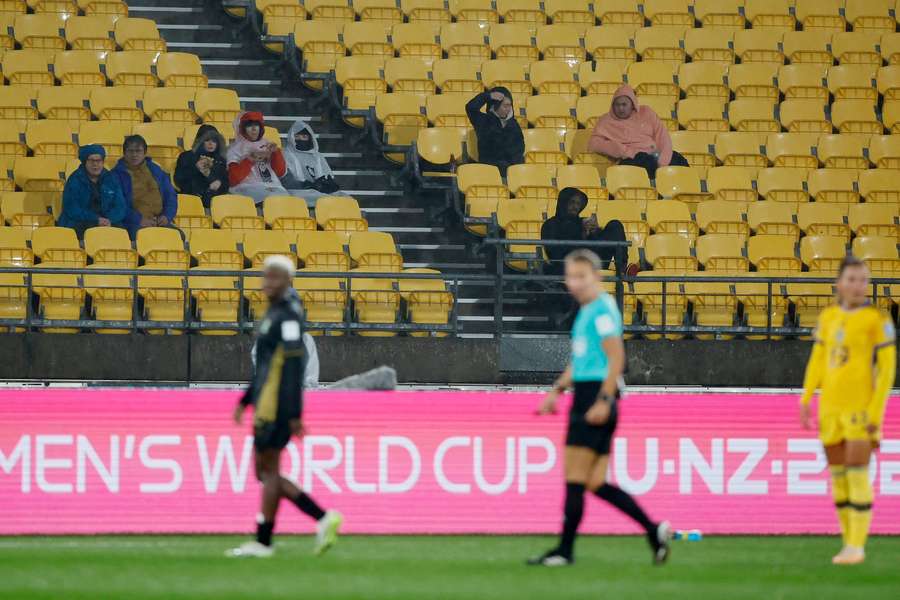The first week of this Women’s World Cup has seen records falling like dominoes.
Australia saw its largest crowd for a women’s football match with over 75,000 fans turning up in Sydney for the Matildas opening game.
It was a similar story in New Zealand, as over 42,000 watched the Football Ferns shock Norway 1-0 at Eden Park. That attendance was a record for a men’s or women’s football game in the country.
This tournament is also on course to smash the record for the highest attendance at a standalone women’s sporting event.
Whilst large crowds for host nation matches are somewhat expected at major tournaments, there have also been strong turnouts for some of the other early group games.
More than 44,000 witnessed England struggle past Haiti in Brisbane, whilst just over 41,000 watched the USA ease to victory against Vietnam in Auckland.
It’s an impressive start to this month-long extravaganza of women’s football, with more big attendances predicted for future Matildas matches and the knockout stages.
But away from the showpiece occasions featuring giants of the women’s game, there have been some matches that have struggled to bring in the fans.
Dunedin’s Forsyth Barr Stadium has hosted two groups games so far and it was less than half full on both occasions.
Rows of empty seats were also seen at Wellington Regional Stadium on Friday night as Spain thrashed Costa Rica.
In the build-up to this tournament, there were real concerns about ticket sales in New Zealand.
FIFA President Gianni Infantino (53) made a rallying cry to the public to purchase more tickets and there were reports of sponsors handing out some 20,000 tickets.
Judging by the attendance figures at some of the New Zealand stadiums, they were right to be concerned.
Football remains somewhat of a minority sport in New Zealand, where rugby dominates the sporting landscape. Generating interest for a women’s football tournament was always going to be challenging.
New Zealand is also less likely to capitalise on World Cup tourists compared to its co-hosts across the Tasman Sea. It is, quite literally, at the end of the earth. Meaning an even longer journey for fans making the trip to Australia.
Some of the host venues, such as Dunedin, also have small populations. It makes a reduced attendance at matches almost inevitable.
But it’s hard to judge the host nation's appetite for a tournament purely on attendance figures alone. It’s instead important to assess if the World Cup has caught the public's imagination and even flickered an interest in the minds of non-football fans.
SYDNEY SHOWCASE
On that basis, in Australia at least, this tournament has started very strongly.
In Sydney, the World Cup is a genuine conversation topic. Be it the shopkeeper who spent five minutes explaining why Sam Kerr (29) would be missed against Nigeria. Or the waitress who said that she had bought tickets for a game based on the excitement that was building for the tournament.
A walk around the city centre also provides a constant reminder that there’s a World Cup taking place on the doorstep.
Colourful banners advertising the tournament are hanging off lampposts and it’s almost impossible not to spot a Matilda staring back at you from a marketing poster.
My experience in Sydney may not be replicated in other parts of the country, and indeed New Zealand, but judging from what I’ve witnessed on television and social media, there is genuine World Cup fever in this part of the world.
But there remains one big World Cup party pooper. The ability to actually watch the games.
In Australia, just 15 matches are being shown on free-to-air television, with a subscription required to watch the rest. That’s a pretty stark contrast with the men’s World Cup in Qatar, where every game was available for free for Australians.
It’s a slightly easier viewing experience in New Zealand, with 26 games broadcast for free.
Football television rights are obviously big business, but it certainly feels wasteful to not allow the public unfiltered access to this tournament when it’s happening in their own backyard.
The lack of free-to-air matches also explains why I have seen some pubs and bars showing other sports when World Cup matches are being played.
Fortunately for fans, more games will be free to all in the latter stages of the tournament, meaning that momentum should build nicely ahead of the final on August 20th.

